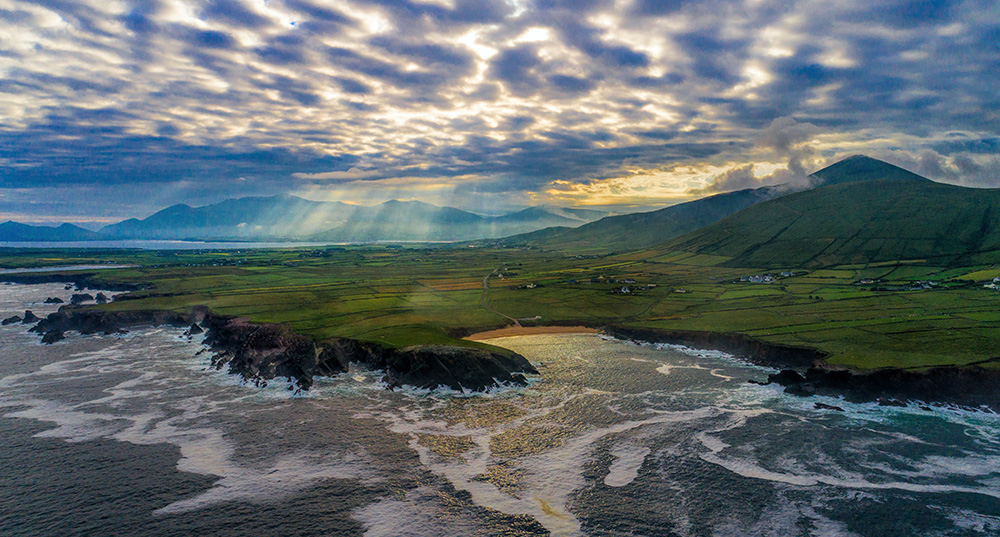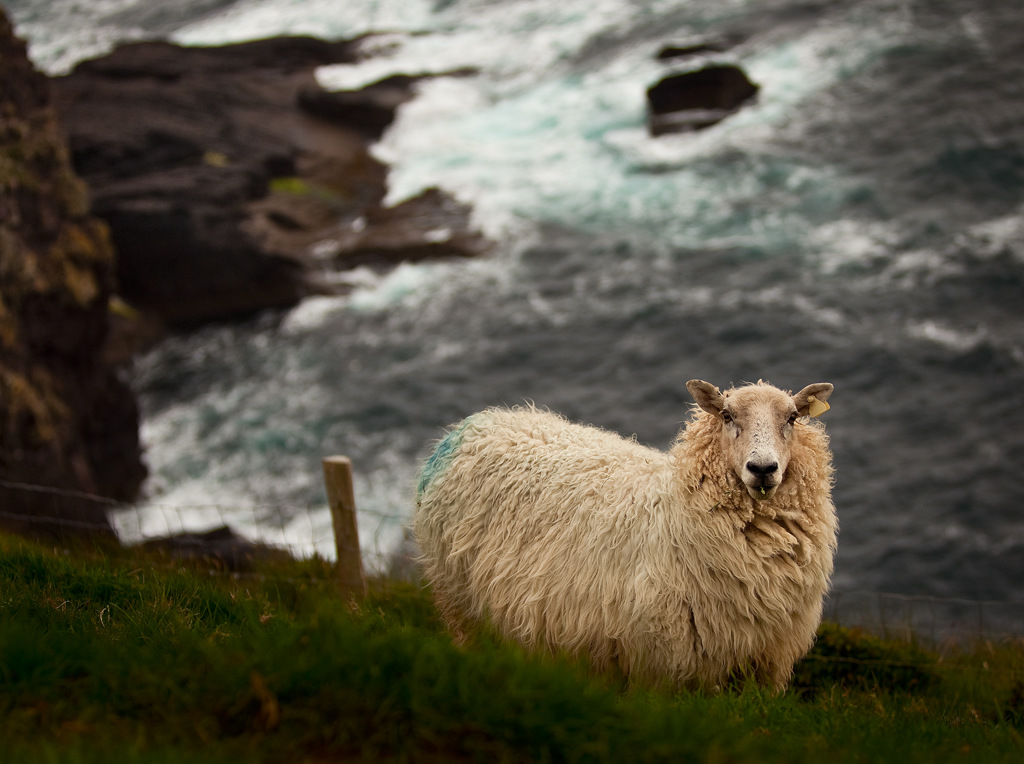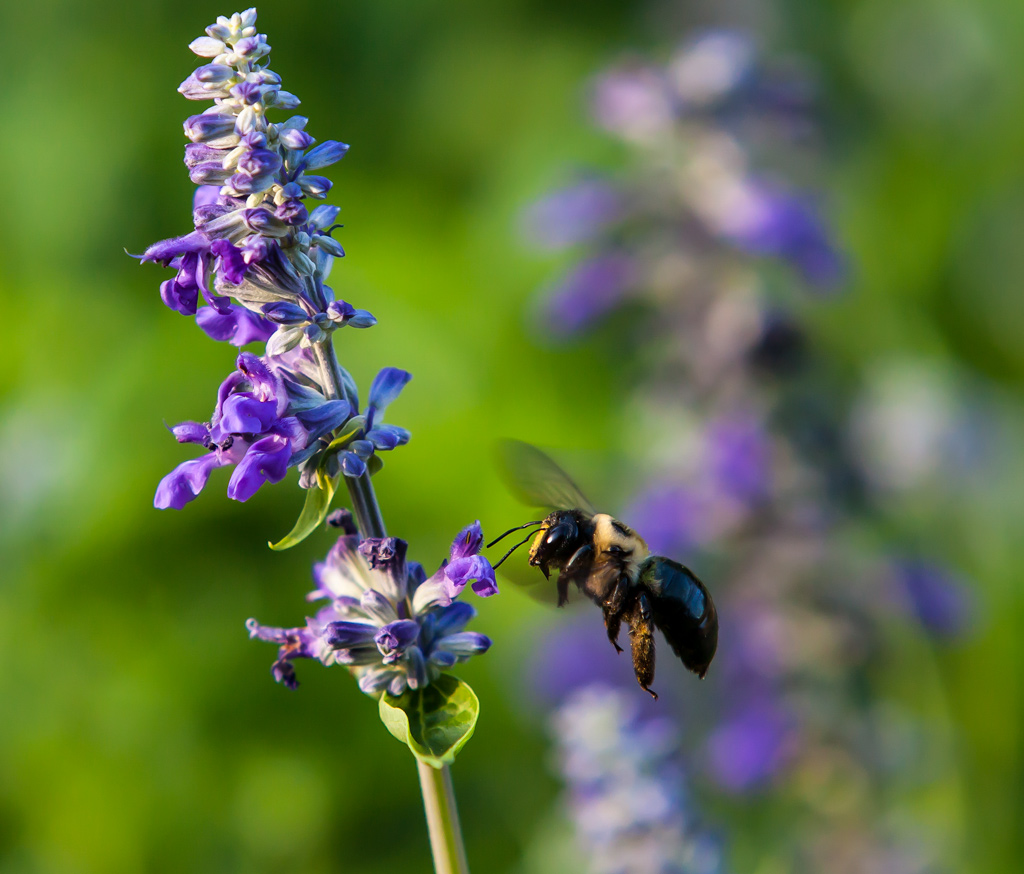
When it comes to choosing the mode to use on your camera, the two choices that virtually everyone (myself included) recommends are either Manual mode (M on the mode dial) or Aperture Priority mode (A or Av). The rationale for Manual mode is that, while it is surely the slowest one to set and use, it is the one that gives you the most control over the exposure process. The rationale for Aperture Priority mode is that, while you don’t have quite as much control over the exposure process, you still have a healthy degree of control and you can set the exposure much quicker given the assist from camera. Either is fine, and we’re not going to debate them here.
Instead, let’s talk about your choices when you are not using Manual mode. As just mentioned, nearly everyone recommends Aperture Priority mode. If you are unfamiliar with Aperture Priority mode, it allows you to set the aperture for the picture, while the camera sets a corresponding shutter speed to get you a proper exposure. In other words, you control the aperture and the camera controls the shutter speed. But there is another way you can go about things, which is generally ignored, and it is called Shutter Priority mode (S or Tv on the mode dial). In Shutter Priority mode, you set the shutter speed for the picture and the camera sets a corresponding aperture to get you a proper exposure. It works in exactly the opposite way as Aperture Priority mode.
Considering Shutter Priority as an Option
As just mentioned, almost nobody recommends using Shutter Priority mode. But why? Why place such importance on aperture over shutter speed? After all, shutter speed is extremely important to your picture. A fast shutter speed has as much to do with getting sharp pictures as anything. You can also stop the action using a really fast shutter speed. On the other hand, slow shutter speeds can lead to blur, either unintentional camera shake or intentional motion blur. Why is everyone so dead set on controlling the aperture and letting the shutter speed fall where it may?
I recently received this question in the context of a wildlife shot. I recommended using Aperture Priority mode over Manual mode since the photographer would have to work very quickly and would not have time to center the meter themselves. I further recommended that he use his camera’s largest aperture setting, explaining that this would result in a nice shallow depth of field and also that this would let the most light in possible, resulting in the fastest shutter speed possible. The photographer quite reasonably asked, why not just use Shutter Priority Mode, set the shutter at a fast shutter speed such as 1/1000 of a second, and then let the aperture float?
Hmm. It would work, wouldn’t it? It would guarantee a fast shutter speed so that the animal would surely be very sharp. Assuming he had sufficient light, he’d still have a fairly large aperture so there would be a nice shallow depth of field. But it didn’t sit right with me. So I thought through it with an example, which ultimately led me back to my original premise (that he should use Aperture Priority mode) and also reinforced to me why we all use Aperture Priority mode over Shutter Priority mode. So let’s walk through it.

A Wildlife Example: Comparing Aperture and Shutter Priority
Let’s start by working through this in Aperture Priority mode and see what happens as the light changes on us. Let’s say you set your aperture at wide open and the camera’s meter is centered with a shutter speed of 1/1000. You set that and now you’re aiming the camera in various directions and getting different shots of wildlife. Sometimes there is a little more light in the scene and sometimes there is a little less. Your shutter speed will fluctuate between something like 1/500 and 1/2000 (maybe a little more and maybe a little less). That’s just fine, isn’t it? You’ll probably be happy with any speed in that range. It is fast enough to stop the action regardless. There is really no discernible impact on your picture.
But now let’s play out that same scenario in Shutter Priority mode. You set your shutter speed at 1/1000 and the camera will decide the aperture setting. Let’s say the camera puts the aperture at its widest setting, since that is what we said in the prior example. As with the previous scenario, you’ll be aiming the camera in various directions trying to capture wildlife and the light levels will be changing a little bit depending on which way you are aimed. You’ll encounter two problems, however, which are as follows:
- Increased Depth of Field: When the scene is a little brighter than you started with, the camera will make your aperture smaller, which increases the depth of field. You probably won’t like that much because you want the animal isolated against a blurry background. Detail in the background just creates distractions.
- Underexposure Once Max Aperture Reached: Even worse, however, when the scene is a little darker than what you started with, the camera will try to make the aperture larger, but it won’t be able to because the aperture will already be at its widest setting. In that case, your picture will be underexposed. Even if you slow down your shutter speed to avoid the underexposure problem caused by the camera reaching the max aperture, then you’re still dealing with a variable depth of field, which you won’t like.
So these are two problems you’ll encounter with Shutter Priority that really wouldn’t be issues with Aperture Priority.

Controlling Shutter Speed with Aperture Priority
In any event, I think you’ll quickly find that you can adequately control your shutter speed by using Aperture Priority Mode. If you’ve been using it for a while, once you set your Aperture (and ISO) you’ll have a pretty good idea what your shutter speed will be. In any event, a quick glance at the LCD will show you and you can adjust from there, if necessary. If you are just starting out, just be mindful that this will happen.
Of course, I suppose you could do the same thing in reverse using Shutter Priority. That is, you could set the shutter speed (and ISO) and then have a pretty good idea what the aperture will be. It seems easier by setting the Aperture first though. Plus you still have the same two problems set forth above.
Sticking with Aperture Priority
It has taken me a long time to get to the main concept, but I think it really boils down to this: deviations in shutter speed, when you are using a very fast shutter speed, will have virtually no impact on your picture. On the other hand, deviations in aperture will have a considerable impact on depth of field. So I want to control the aperture more than I want to control the shutter speed.
It really comes down to the impact of a stop of light in shutter speed versus aperture. When setting your shutter speed, what’s the difference between 1/500 and 1/1000? Or between 1 second and 2 seconds? Usually not much. But what’s the difference between f/2.8 and f/4. Or between f/8 and f/11. That’s usually a bit more significant.
Does that mean there is never a place for Shutter Priority mode? No, I can see situations where you really want a particular shutter speed above all other things. And keep in mind that is just my rationale – and reasonable minds can differ here. I just think that in most situations Aperture Priority will work better for you.

